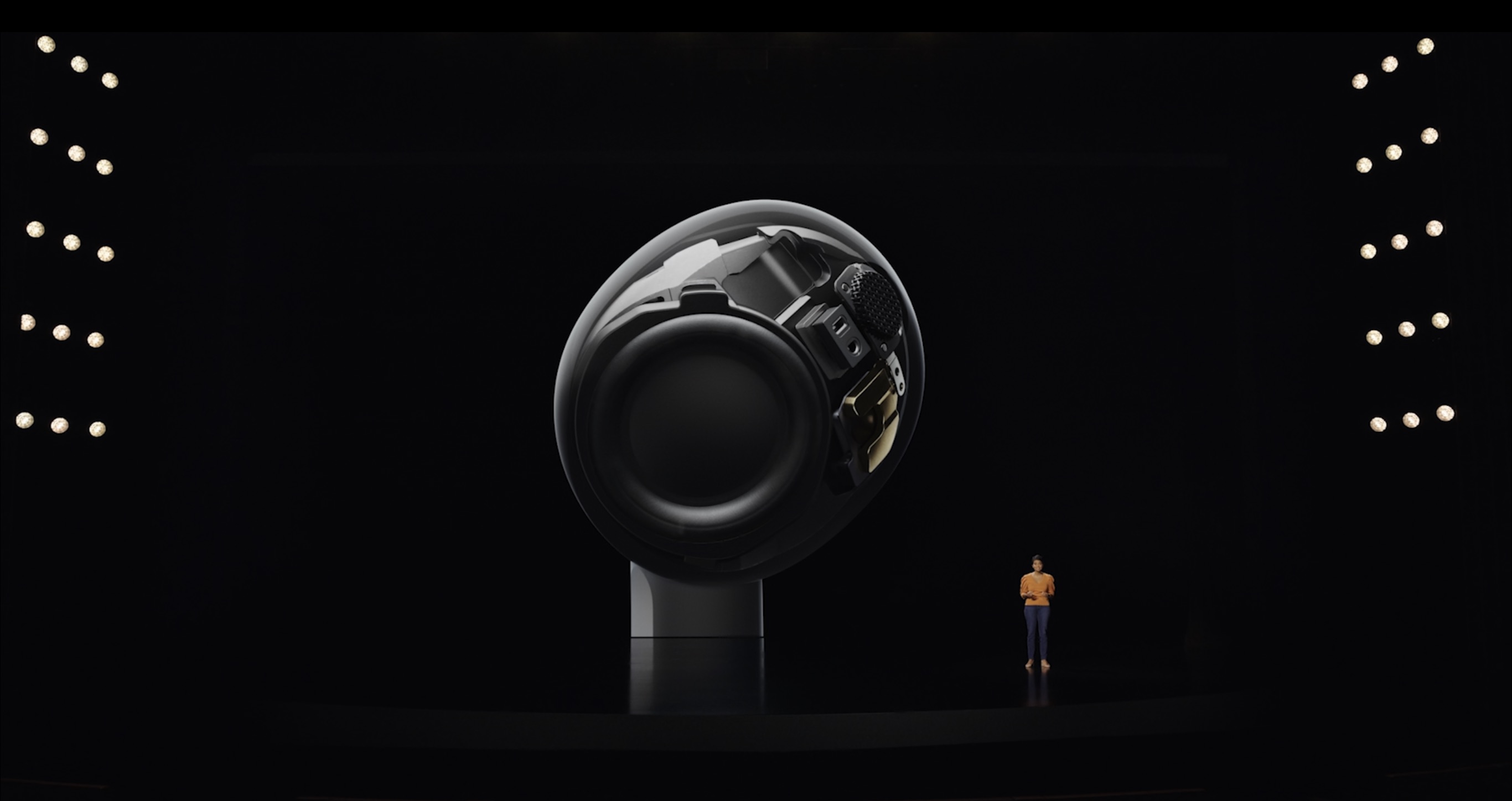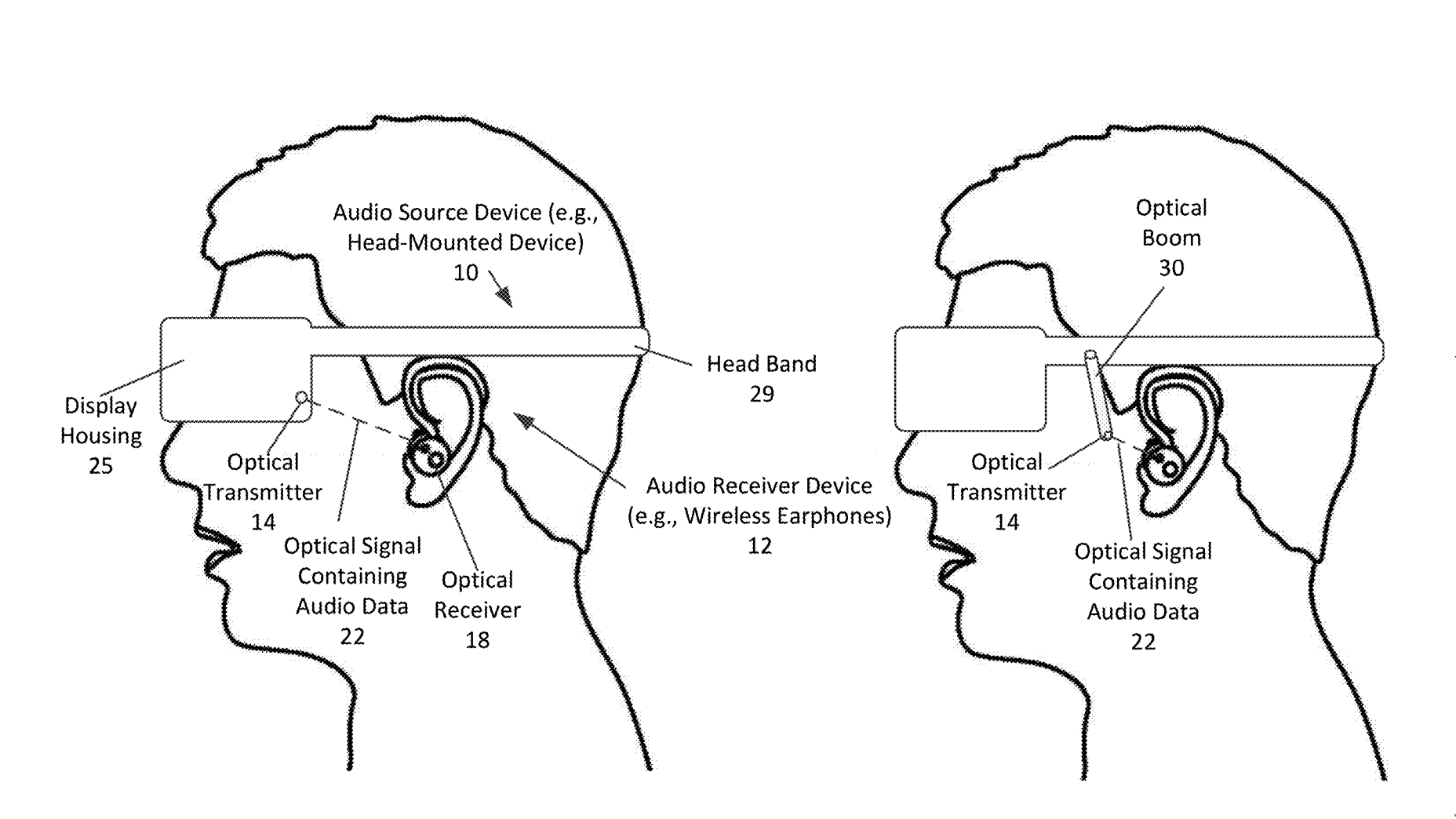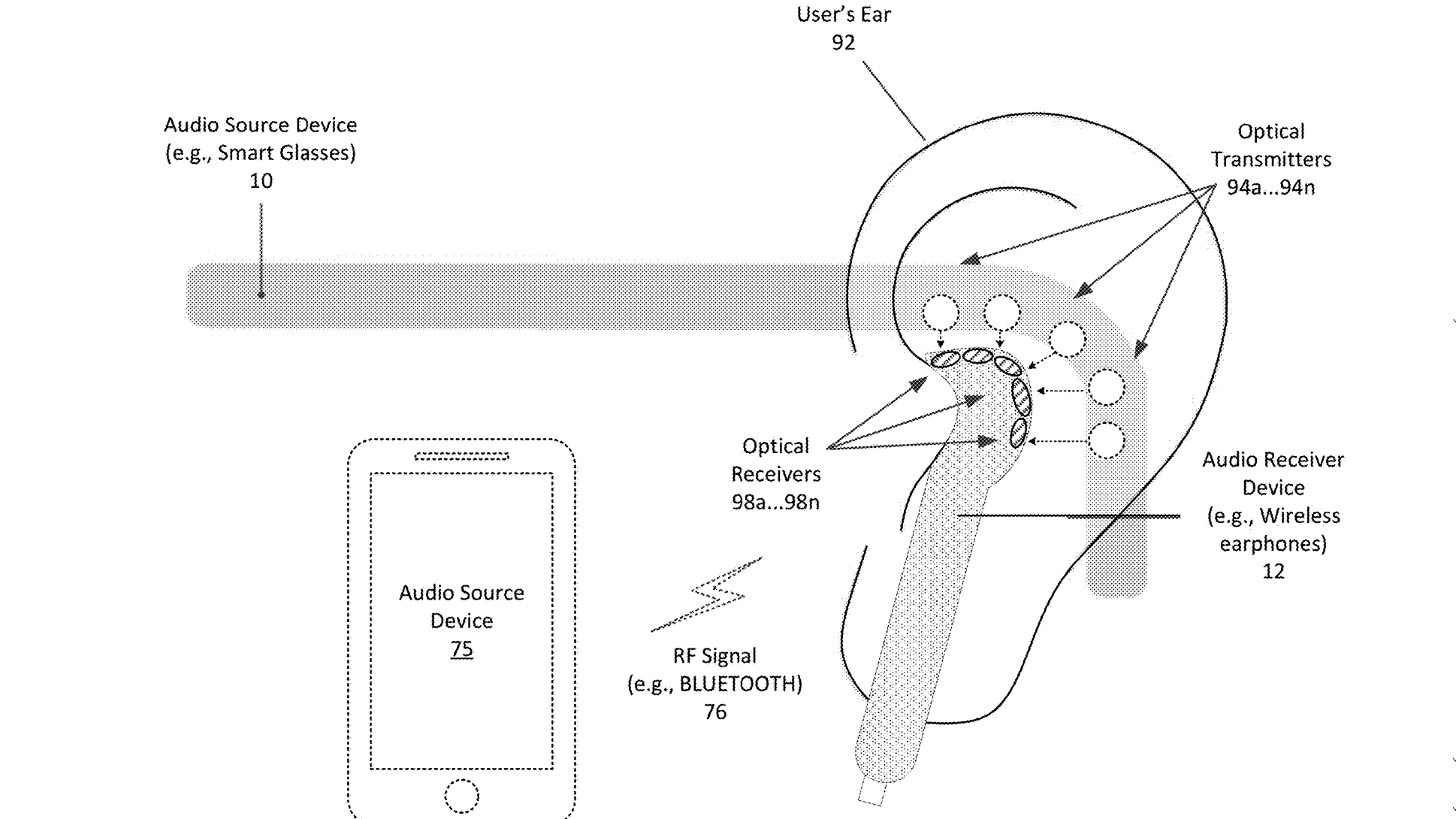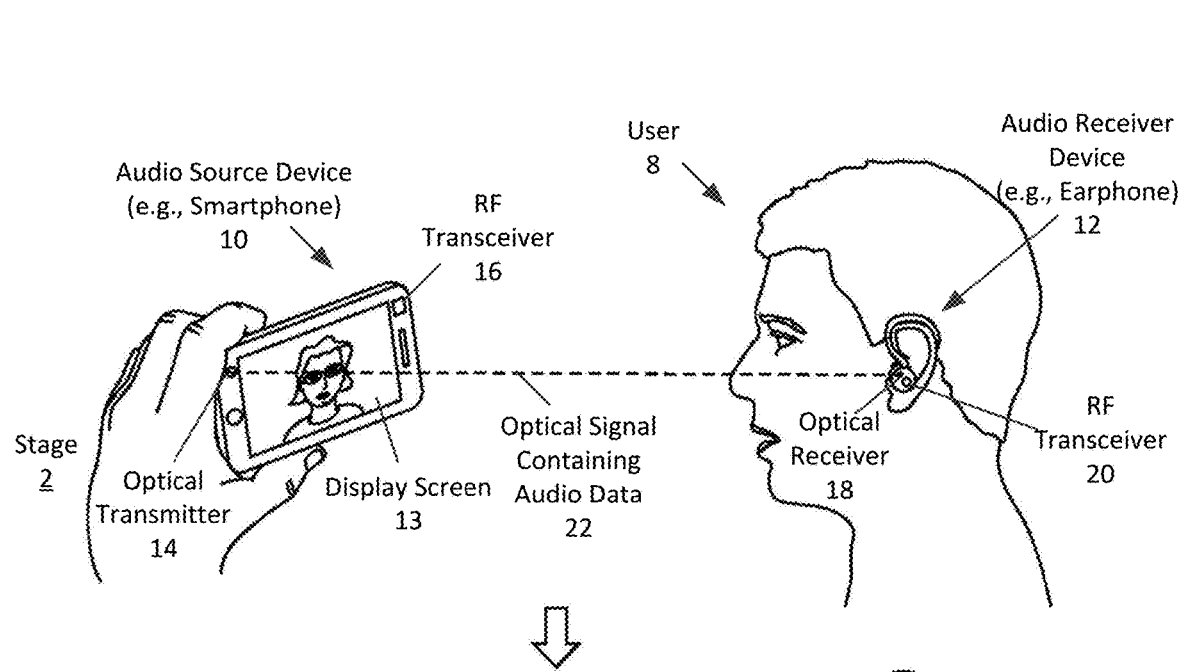Is Apple looking to replace Bluetooth with optical audio transmission to AirPods?
A freshly granted patent suggests Apple's looking into it, at least...

Last summer, when Apple upgraded Apple Music in a big way to include two higher-resolution Lossless tiers plus a two-pronged Spatial Audio offering, we applauded the tech giant. At the same time, we noted a big problem: Bluetooth. The Bluetooth connection (the method of connectivity used by every one of Apple's AirPods headphones) boasting the bandwidth to wholly support the upgraded service does not yet exist.
But it's always fun to watch the Cupertino giant work on a solution and, thanks to a freshly-granted Apple patent, we have a potential glimpse into Tim Cook's brainstorming meetings.
The patent suggests that the company could be planning to use optical audio transmission from its rumoured AR/VR headset – slated for a 2022 release (which could even be followed by cheaper 'Apple Glasses' in 2023) – to its AirPods.

Before Christmas, we spoke with Apple's head of acoustics, Gary Geaves, about the limitations of Bluetooth bandwidth and the firm's Award-winning Spatial Audio content. His comments certainly seem to add weight to the importance of the patent.
“Obviously the wireless technology is critical for the content delivery that you talk about”, he said, “but also things like the amount of latency you get when you move your head, and if that’s too long, between you moving your head and the sound changing or remaining static, it will make you feel quite ill, so we have to concentrate very hard on squeezing the most that we can out of the Bluetooth technology, and there’s a number of tricks we can play to maximise or get around some of the limits of Bluetooth. But it’s fair to say that we would like more bandwidth and… I’ll stop right there. We would like more bandwidth."
Optical audio transmission is certainly one way of getting that desired extra bandwidth. Hi-fi enthusiasts will be familiar with an optical cable, but an optical signal can also be wireless – albeit one that can easily be blocked and so is really only suitable for very short distances. However, it’s precisely this setup that Apple depicts, in its new patent.

First spotted by Patently Apple, the filing leads with the relatively specific (for a patent, at least) text:
Get the What Hi-Fi? Newsletter
The latest hi-fi, home cinema and tech news, reviews, buying advice and deals, direct to your inbox.
"A system that includes an audio source device configured to obtain audio data of at least one audio channel of a piece of program content. The audio source device has an optical transmitter for transmitting the audio data as an optical signal and a radio frequency (RF) transceiver. The system also includes a wireless earphone that has an optical receiver for receiving the audio data as the optical signal, a RF transceiver for transmitting feedback data indicating a reception quality of the received optical signal at the wireless earphone as a wireless RF signal, and a speaker for outputting the audio data contained within the optical signal and/or the data packets as sound."
Alongside direct reference to an 'earphone', one of the illustrations within the patent clearly shows an AirPod-esque headphone – conclusive proof that the company is at least considering the viability of an optical audio connection from a headset to a pair of in-ear AirPods.

As noted by 9to5Mac, even this short-distance optical audio connection – aka direct line-of-sight – to in-ear headphones could throw up issues, which is likely the reason Apple’s patent also describes a Bluetooth signal. This secondary connection could be used to "tell" the AirPods the signal that should have been sent, then used by the AirPods to relay back what was actually received. As is also the case with several wireless-enabled speakers, Bluetooth audio could be the plan B audio connection if optical audio failed.
Of course, it's important not to get too excited – Apple files thousands of patents each year (yes really, see patent data portal Insights by GreyB) and only a fraction ever make it out into the wild.
That being said, the granted filing does open the door to the possibility of wireless optical audio as an alternative to Bluetooth.
Elsewhere, Apple is almost certainly gearing up for the launch of the iPhone 14 (with rumoured hole-punch display) in September, but if that feels too far away, we could be seeing a brand new iPad Air with A15 Bionic chip and iPhone SE as soon as "this spring"...
MORE:
Want to try Spatial Audio with dynamic head-tracking? See Apple Music lossless: which devices will (and won't) play lossless and Spatial Audio
After a new Apple handset? These are the best iPhones around
And these are the best wireless earbuds for your consideration
Becky has been a full-time staff writer at What Hi-Fi? since March 2019. Prior to gaining her MA in Journalism in 2018, she freelanced as an arts critic alongside a 20-year career as a professional dancer and aerialist – any love of dance is of course tethered to a love of music. Becky has previously contributed to Stuff, FourFourTwo, This is Cabaret and The Stage. When not writing, she dances, spins in the air, drinks coffee, watches football or surfs in Cornwall with her other half – a football writer whose talent knows no bounds.
